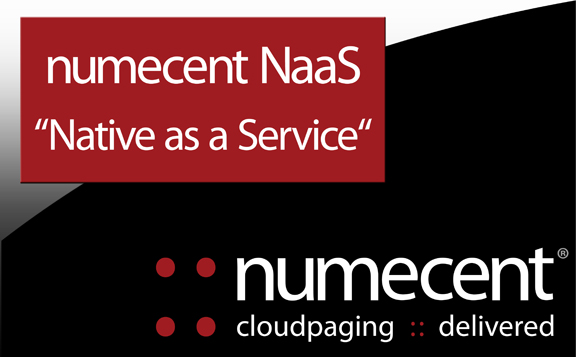Cloud Computing Gone Native
Latest News
July 22, 2013
The punchline came about 20 minutes into the demo. Osman Kent, CEO and cofounder of Numecent, showed a mischievous smile as he clicked off the last of his PowerPoint slides. “You’ve just seen a PowerPoint presentation,” he said. “But I don’t have PowerPoint installed on my machine.”
What he had was a thin client, showing a list of applications he was running remotely. PowerPoint was listed in that registry. Then it dawned on me. The presentation I just saw was also a demo. It was running on Numecent’s cloud-streaming technology, dubbed NaaS (Native as a Service).
Kent was in San Francisco a few weeks ago, part of his tour to promote NaaS. We met in a gourmet coffee stand in the Mission, the Bohemian district where unorthodox ideas are universally encouraged. Kent described NaaS as a “white-label cloud-paging platform.” NaaS is a play on the familiar terms SaaS (Software as a Service), PaaS (Platform as a Service), and IaaS (Infrastructure as a Service). It’s “white-label” because it’s meant to work behind the scene, as an invisible middleware (or, if you’d like, background-ware).
Kent is currently pitching Numecent’s technology to independent software vendors (ISVs). His proposition to CAD/CAM/CAE software makers is quite straightforward. You want to get into the cloud commerce without rewriting your legacy desktop code? Just offer a web-streaming version using Numecent’s NaaS.
“As the delivery of digital goods moves unstoppably towards the Cloud, companies offering SaaS have been reaping enormous economic benefits with their Web applications” said Kent. “However, until the advent of NaaS, most ISVs with native applications have been unable to participate in this new economy due to technical, financial and resourcing barriers. NaaS changes all that—it is an instant enabler for ISVs, large and small, who want to monetize their inventory now—with or without subscription. NaaS is an effortless on-ramp to the Cloud economy for ISVs.”
NaaS is different from SaaS in one aspect, according to Kent. NaaS allows you to stream, cache, and run a native CAD program; SaaS lets you access the software on a remote server and stream pixels to your monitor. The NaaS advantage, Kent pointed out, is that you’re working with native CAD geometry, not just sending and receiving pixels.
Another significant difference between SaaS and NaaS. SaaS applications rely on the remote server to do the lion’s share of the work and only transmit pixels representing the results (edited geometry, simulation results, and so on). NaaS applications transmit the necessary chunks of code and run them on your local machine’s resources.
Because SaaS relies on remote hardware to execute most operations, SaaS users may use a lightweight device (for example, a consumer laptop, not necessarily certified to run professional 3D design software) to run compute-intensive programs. That’s always been the value proposition from SaaS champions. NaaS, by contrast, requires you to possess the hardware suitable for the software you’re streaming. Kent believed that wouldn’t be a hurdle for the design and engineering market, because most users do have the necessary hardware.
So why bother streaming? Why not just use the desktop-installed version? Kent’s list of NaaS benefits include the options to:
- rapidly Cloud-ify and SaaS-ify software inventory;
- rapidly integrate with web services such as e-Commerce or CRM;
- drastically reduced piracy; and
- offer friction-free trial or beta programs.
NaaS, SaaS, PaaS, IaaS—the growing list of X-as-a-Service delivery models point to a fundamental shift in the consumer’s usage model. Many software vendors, and even some hardware vendors, are expecting technology users to opt for on-demand usage instead of ownership. Ultimately, users won’t bother dissecting the acronyms and the technology working behind the scene if the experience is flawless.
Subscribe to our FREE magazine, FREE email newsletters or both!
Latest News
About the Author
Kenneth Wong is Digital Engineering’s resident blogger and senior editor. Email him at [email protected] or share your thoughts on this article at digitaleng.news/facebook.
Follow DE






